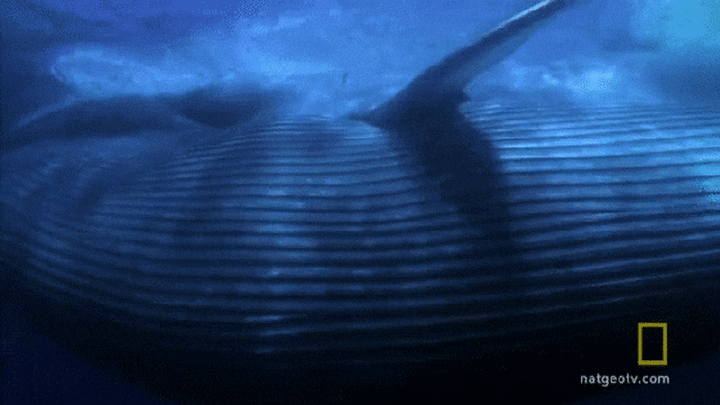Blue Whales Maintain Their Size By Eating Smart

When blue whales, the Earth’s largest animals, are shown feeding on krill in nature documentaries, it looks like an all-you-can-eat buffet. The giants of the deep blue sea appear to open their massive jaws to consume any and everything in their way, but a new study suggests that blue whales are very efficient eaters in terms of quantity and energy conservation, which helps the mammals maintain their impressive size.
Recently published in the journal Science Advances, the study used data from 55 tagged blue whales off the coast of California. The researchers found that instead of going to town on as many krill as they can find throughout the day, blue whales passed up smaller or less dense shoals of krill to conserve energy for lunge-feeding, a tactic the scientists describe as “a high-cost, high-benefit foraging mode that confers high energetic efficiency when engulfing very dense prey patches.”
“Blue whales don't live in a world of excess, and the decisions these animals make are critical to their survival,” study co-author Ari Friedlaender, associate professor at Oregon State University’s Hatfield Marine Science Center, said in a press statement. Blue whales feed longer in areas with denser shoals, and interrupting those sessions is less than ideal. “It may not have consequences today, or this week, but it could over a period of months," Friedlaender said. "There can be impacts on their overall health, as well as on their fitness and viability for reproduction.”